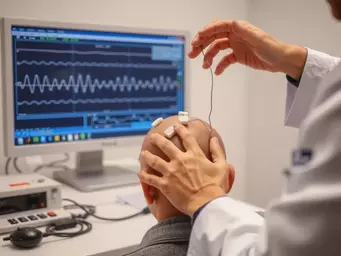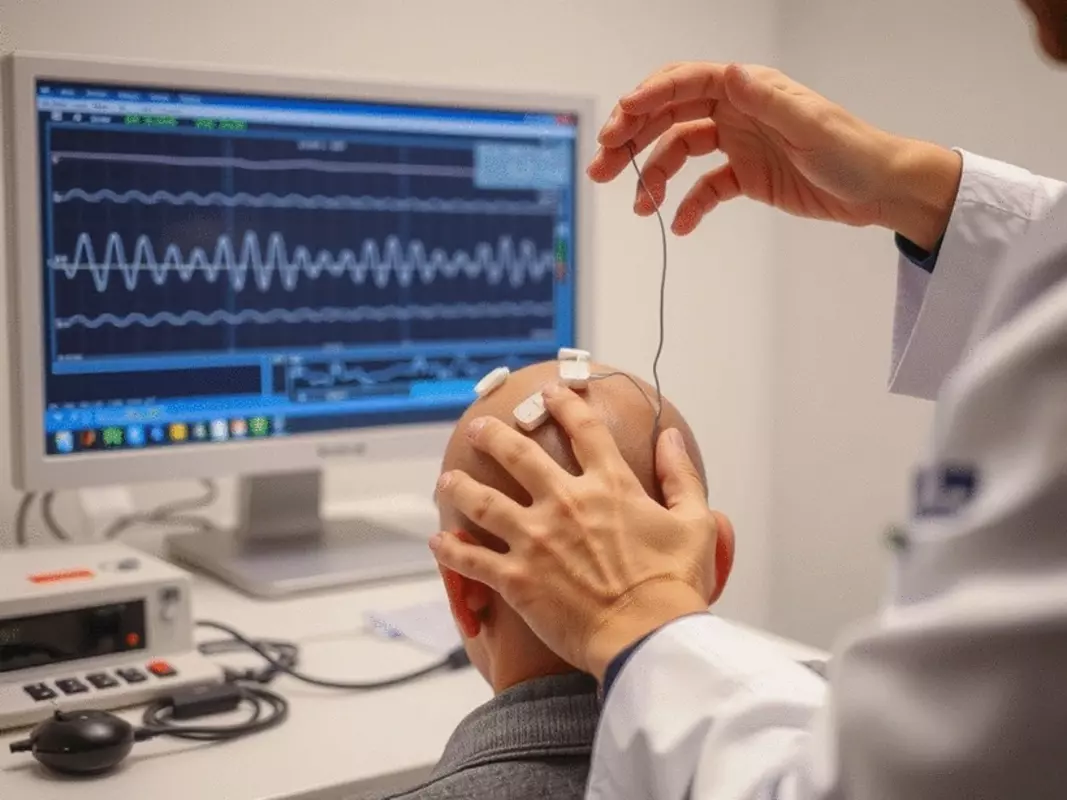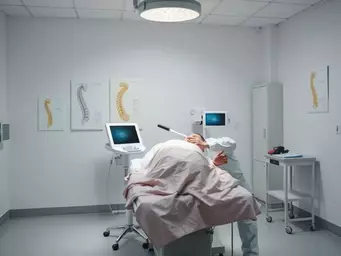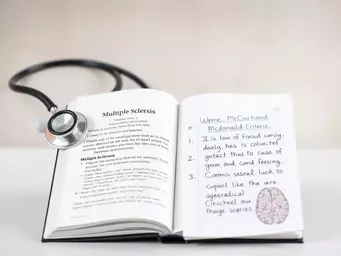Understanding Evoked Potential Tests
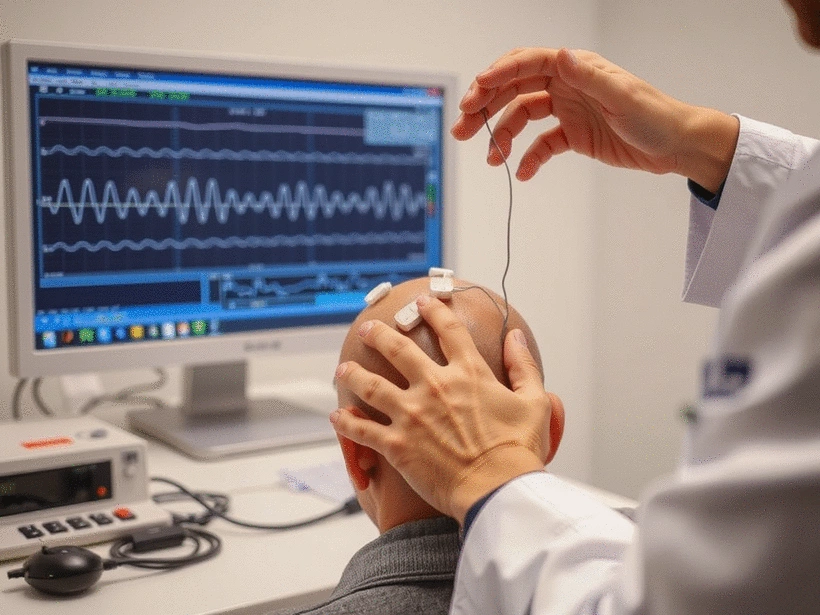
Have you ever wondered how electrical signals in your brain could reveal critical information about your health? Evoked potential tests are a fascinating diagnostic tool that can provide insights into conditions like multiple sclerosis (MS) by measuring how your brain responds to various stimuli. Understanding these tests is key to navigating your healthcare journey effectively.
What You Will Learn
- Evoked potential tests assess the speed and effectiveness of nerve signals in the brain and spinal cord.
- Different types of evoked potential tests include Visual Evoked Potentials (VEP), Brainstem Auditory Evoked Potentials (BAEP), and Somatosensory Evoked Potentials (SSEP).
- These tests can detect nerve damage that may not be visible on an MRI, providing critical insights for MS patients.
- Preparation for an evoked potential test involves understanding the procedure and addressing any concerns with your healthcare provider.
- After the test, results can help guide treatment decisions and improve the overall management of MS.
Evoked Potential Tests for MS Diagnosis and Monitoring
This visual outlines the key types of Evoked Potential Tests used in the diagnosis and management of Multiple Sclerosis, highlighting their function and relevance.
Visual Evoked Potentials (VEP)
Assess the visual pathways, particularly useful for detecting optic nerve damage, a common MS symptom.
Brainstem Auditory Evoked Potentials (BAEP)
Evaluate auditory pathways and nerve signals in response to sound stimuli, relevant for hearing challenges.
Somatosensory Evoked Potentials (SSEP)
Measure sensory signal transmission through the nervous system, identifying delays or disruptions from touch stimuli.
Motor Evoked Potentials (MEP)
Assess motor pathways by stimulating the brain and measuring muscle responses, useful for comprehensive evaluations.
Understanding Evoked Potential Tests and Their Importance in Multiple Sclerosis
When it comes to diagnosing multiple sclerosis (MS), evoked potential tests play a crucial role. These tests measure the brain's electrical activity in response to specific stimuli, helping us understand how well the nervous system is functioning. By evaluating how quickly and effectively the brain processes these signals, we can gain insights into potential nerve damage.

As someone who has dedicated years to studying MS, I find it fascinating how these tests provide valuable information that complements other diagnostic methods. It’s not just about diagnosing MS but also understanding its progression and effects on daily life.
What Are Evoked Potential Tests?
In essence, evoked potential tests are designed to assess the electrical activity in the brain in response to sensory stimuli. They measure how quickly nerve signals travel through the brain and spinal cord, which can indicate potential issues with nerve pathways. More information on these tests can be found on the Cleveland Clinic's detailed page about evoked potential tests.
- Visual Evoked Potentials (VEP): assess the visual pathways in response to visual stimuli.
- Brainstem Auditory Evoked Potentials (BAEP): evaluate the auditory pathways by measuring responses to sound.
- Somatosensory Evoked Potentials (SSEP): monitor responses to tactile stimuli, assessing sensory pathways.
These tests are particularly important for individuals with MS, as they can help detect damage that may not yet be visible on an MRI. In my practice with Symptoms of MS, I’ve seen how these tests can empower patients by providing clarity about their condition.
How Do Evoked Potential Tests Work?
Evoked potential tests are conducted by placing electrodes on the scalp and sometimes on the skin over the spine. These electrodes record the electrical signals generated in response to specific stimuli, such as visual patterns, sounds, or light touch. The methodology is quite straightforward but provides critical insights.
- Electrode Placement: Electrodes are strategically placed to capture signals from different areas of the brain.
- Types of Stimuli: Visual, auditory, or tactile stimuli are used depending on the specific test being conducted.
- Signal Processing: The recorded signals are analyzed to determine the speed and strength of the nerve responses.
Understanding how these tests are performed can alleviate some anxiety around the process. I always encourage my patients to ask questions and express any concerns they may have. Knowledge is power, and being informed can make a huge difference in your healthcare journey.
Diving Deeper: Types of Evoked Potential Tests Relevant to MS
Visual Evoked Potentials (VEP): Detecting Damage in the Optic Nerve
Visual evoked potentials are particularly useful in evaluating the function of the optic nerve, which can often be affected in MS patients. By analyzing how the brain responds to visual stimuli, we can gain insights into the health of the optic pathways. The National Center for Biotechnology Information provides comprehensive research on the clinical utility of evoked potentials in neurological disorders, including their role in diagnosing MS.
This test is essential for understanding demyelination, as it can indicate whether there has been a disruption in the nerve signals that travel from the eyes to the brain. I often remind my patients that recognizing these issues early can lead to more effective management strategies.
Brainstem Auditory Evoked Potentials (BAEP): Assessing Auditory Pathways
BAEP tests focus on the auditory pathways, which can also be impacted by MS. By measuring how quickly and accurately the brain responds to sounds, we can assess the status of the auditory nerves. This is particularly important for patients who experience hearing challenges.
In my practice, I emphasize the importance of thorough testing to ensure that all aspects of a patient’s condition are evaluated. Understanding auditory nerve function can lead to a more comprehensive treatment plan.
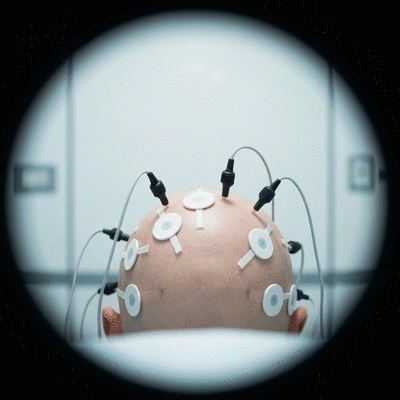
Somatosensory Evoked Potentials (SSEP): Evaluating Sensory Pathways
Somatosensory evoked potentials measure how sensory signals travel through the nervous system, providing insights into sensory nerve function. This test helps us understand how well the brain and spinal cord communicate in response to touch or other stimuli. For further reading on the scientific background, Frontiers in Cellular Neuroscience offers an article discussing recent advances in evoked potential techniques.
By interpreting the results in the context of MS, we can identify areas where nerve signals may be delayed or disrupted. This information is invaluable for tailoring personalized treatment options.
Motor Evoked Potentials (MEP): A Less Common But Valuable Test
Motor evoked potentials, though less frequently used, can provide significant insights into the motor pathways affected by MS. By stimulating the brain and measuring muscle responses, we can assess the integrity of motor pathways.
In some cases, including MEPs in assessments can enhance the understanding of a patient's overall condition and guide treatment decisions. I often advocate for comprehensive evaluations to ensure that no aspect of a patient’s health is overlooked.
Pro Tip
Did you know? Keeping a symptom diary can greatly enhance your discussions with healthcare providers. By noting the frequency and intensity of symptoms like fatigue or numbness, you can provide valuable information that aids in the interpretation of evoked potential test results and overall management of MS.
Preparing for Your Evoked Potential Test: What to Expect
Preparing for an evoked potential test can seem daunting, but knowing what to expect can ease your anxiety. To start, it’s important to understand that the procedure is straightforward and designed with your comfort in mind. You’ll usually be asked to sit in a comfortable chair or lie down, and the technician will place small electrodes on your scalp and possibly other areas of your body.
Before the test, I often encourage my patients to reach out with any questions or concerns. If you’re feeling nervous, consider bringing someone along for support. Having a trusted friend or family member by your side can make a significant difference in your overall experience!
Patient Experience: Comfort and Safety During the Test
- Wear comfortable clothing that allows easy access to areas where electrodes will be placed.
- Discuss any medications or health conditions with your healthcare provider beforehand.
- Stay relaxed and follow instructions during the test, as this helps ensure accurate results.
During the test, you may be asked to focus on specific tasks, like watching flashing lights or listening to sounds. Remember, it’s perfectly normal to feel a little anxious. Deep breathing techniques can help calm your nerves. By staying relaxed, you’ll contribute positively to the outcome of the test!
Follow-Up: Understanding Your Results and Next Steps
After your evoked potential test, you might wonder when you'll receive your results. Typically, results are ready in a matter of days to a week, depending on the facility. Your healthcare provider will review them with you, and together, you’ll discuss what the findings mean for your treatment plan.
Understanding your results is crucial. They can shed light on potential nerve damage and guide your healthcare decisions. If any abnormalities are noted, your doctor may suggest further tests or adjustments to your current management strategy. Remember, proactive engagement in your healthcare journey is key!
Enhancing Your Understanding of Evoked Potential Tests and MS
Frequently Asked Questions About Evoked Potential Tests
Many patients have questions about evoked potential tests, and that’s completely understandable! Here are some common concerns:
- What are evoked potential tests? Evoked potential tests measure the electrical activity in the brain in response to specific sensory stimuli to assess nerve pathway function.
- Why are evoked potential tests important for MS diagnosis? These tests can detect nerve damage or demyelination that might not be visible on other imaging tests like MRI, providing critical early insights for MS patients.
- What types of evoked potential tests are commonly used for MS? Visual Evoked Potentials (VEP), Brainstem Auditory Evoked Potentials (BAEP), and Somatosensory Evoked Potentials (SSEP) are the primary types used to assess different nerve pathways.
- Is the test safe? Yes, evoked potential tests are non-invasive and considered very safe with minimal risks.
- How long does the test take? Most tests last approximately 30 minutes to an hour, depending on the specific type of test being performed.
- Will I feel any discomfort during the test? You might feel a slight tingling sensation from the electrodes or the stimuli, but it should not be painful.
- What should I do to prepare for an evoked potential test? Wear comfortable clothing, inform your healthcare provider about any medications or health conditions, and follow all pre-test instructions provided by your clinic.
- What happens after the test? You can typically resume your normal activities immediately. Your results will usually be available within a few days to a week, and your healthcare provider will discuss them with you.
Addressing these questions can help you feel more prepared and at ease as you approach your test day. If you have any other concerns, don't hesitate to bring them up with your healthcare provider!
The Impact of MS on Quality of Life and Patient Management
Living with multiple sclerosis can bring various challenges that affect your daily life. Managing symptoms like fatigue, mobility issues, and cognitive changes requires a robust support system. This is why advocacy and community engagement are crucial! Finding local support groups or online forums can provide you with encouragement and practical advice.
Always remember that you are not alone in this journey. Seeking help from others who understand your experiences can make a world of difference. We at Symptoms of MS are dedicated to empowering you with the information and support you need to navigate your care effectively!
Conclusion: The Value of Evoked Potential Testing in MS Management
In conclusion, evoked potential tests play a vital role in diagnosing and managing multiple sclerosis. By helping to identify nerve damage early, these tests can guide treatment decisions and improve your quality of life. I encourage you to stay proactive in your healthcare engagement, and don’t hesitate to reach out to your healthcare team with questions. Your journey with MS is important, and being informed is a powerful step forward!
Recap of Key Points
Here is a quick recap of the important points discussed in the article:
- Evoked potential tests are critical in diagnosing multiple sclerosis (MS) by measuring the brain's electrical activity in response to stimuli.
- Different types of evoked potential tests, including Visual Evoked Potentials (VEP), Brainstem Auditory Evoked Potentials (BAEP), and Somatosensory Evoked Potentials (SSEP), assess various nerve pathways.
- Preparation for the test involves understanding the procedure, wearing comfortable clothing, and discussing any concerns with your healthcare provider.
- Post-test, results will typically be available within days, and it's essential to discuss them with your healthcare provider to understand their implications for treatment.
- Engaging in patient communities and seeking support can greatly enhance the experience and management of living with MS.


